
A Perfect Storm
It has been said that we are facing a perfect storm, global warming, environmental and ecological meltdown, and now rapidly rising energy and food costs. The war in Ukraine has brought into sharp focus just how precariously balanced the world we inhabit really is. Scientists and economists have been warning us for many years that our current way of living is unsustainable and recent events have brought that into sharp focus. We are not at a crossroads we are at a T junction and the time is right for our leaders and all of us to make some very big decisions.
On the 6 April 2022 the government announced a major acceleration of homegrown power in Britain’s plan for greater energy independence. The thrust of the British Energy Security Strategy can be gleaned in the following extract:

The government’s British Energy Security Strategy sets out how Great Britain will accelerate the deployment of wind, new nuclear, solar and hydrogen, whilst supporting the production of domestic oil and gas in the nearer term – which could see 95% of electricity by 2030 being low carbon.
The strategy will see a significant acceleration of nuclear, with an ambition of up to 24GW by 2050 to come from this safe, clean, and reliable source of power. This would represent up to around 25% of our projected electricity demand. Subject to technology readiness from industry, Small Modular Reactors will form a key part of the nuclear project pipeline.
Our ambitious plans also include:
- offshore wind: a new ambition of up to 50GW by 2030 – more than enough to power every home in the UK – of which we would like to see up to 5GW from floating offshore wind in deeper seas. This will be underpinned by new planning reforms to cut the approval times for new offshore wind farms from 4 years to 1 year and an overall streamlining which will radically reduce the time it takes for new projects to reach construction stages while improving the environment
- oil and gas: a licensing round for new North Sea oil and gas projects planned to launch in Autumn, with a new taskforce providing bespoke support to new developments – recognising the importance of these fuels to the transition and to our energy security, and that producing gas in the UK has a lower carbon footprint than imported from abroad
- onshore wind: we will be consulting on developing partnerships with a limited number of supportive communities who wish to host new onshore wind infrastructure in return for guaranteed lower energy bills
- heat pump manufacturing: we will run a Heat Pump Investment Accelerator Competition in 2022 worth up to £30 million to make British heat pumps, which reduce demand for gas
We will also look to increase the UK’s current 14GW of solar capacity which could grow up to 5 times by 2035, consulting on the rules for solar projects, particularly on domestic and commercial rooftops.
This announcement comes at a time when as we are all aware energy prices have been rising at an alarming rate, thanks in the main to our dependence on fossil fuels, the cost of which is linked to world market prices and events. Combine that with the looming climate emergency, the root cause of which is the burning of fossil fuels, and it is clear that the time is right for bold steps to be made in order to wean ourselves off energy derived from fossil fuels, and move as quickly as possible to a world where our energy is derived form low carbon sources.
But what does all of this mean for Dorset, Bridport and you and I? I have yet to meet someone who does not think that in principle moving to non fossil fuel sources for our energy is the right thing to do, and it is fair to say that the government is knocking on an already wide open door as far as public opinion is concerned. Ideas that were once thought of as the unrealistic pipe dreams of a minority of green eco warriors have now become the mainstream ideals of the overwhelming majority.
How much of this can we deliver here in Dorset? The simple answer is all of it. But in order to do that we are going to have to accept an number of things:
- offshore wind farms in Lyme Bay
- onshore wind turbines across the AONB
- solar farms on hillsides in the AONB and on the roofs of buildings in conservation areas
- small modular nuclear reactors
Is this a price we are willing to pay? Is this a price we are morally obliged to pay?
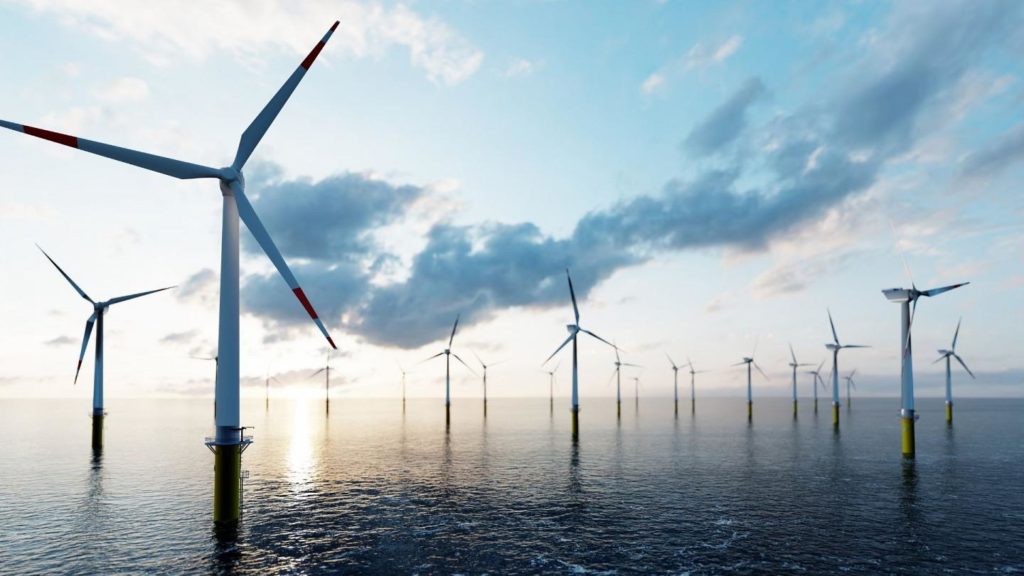
A simple example of the kind of challenging decisions we are going to have to face and need to be thinking about more carefully in future is whether to spend money removing electricity pylons from the AONB in order to improve the visual aesthetic. Many of you will be aware of the work that has been going on around Winterbourne Abbas to remove 22 pylons and place the cables underground. There are a number of questions that we need to ask in association with this project which can help us to think about future spending decisions.
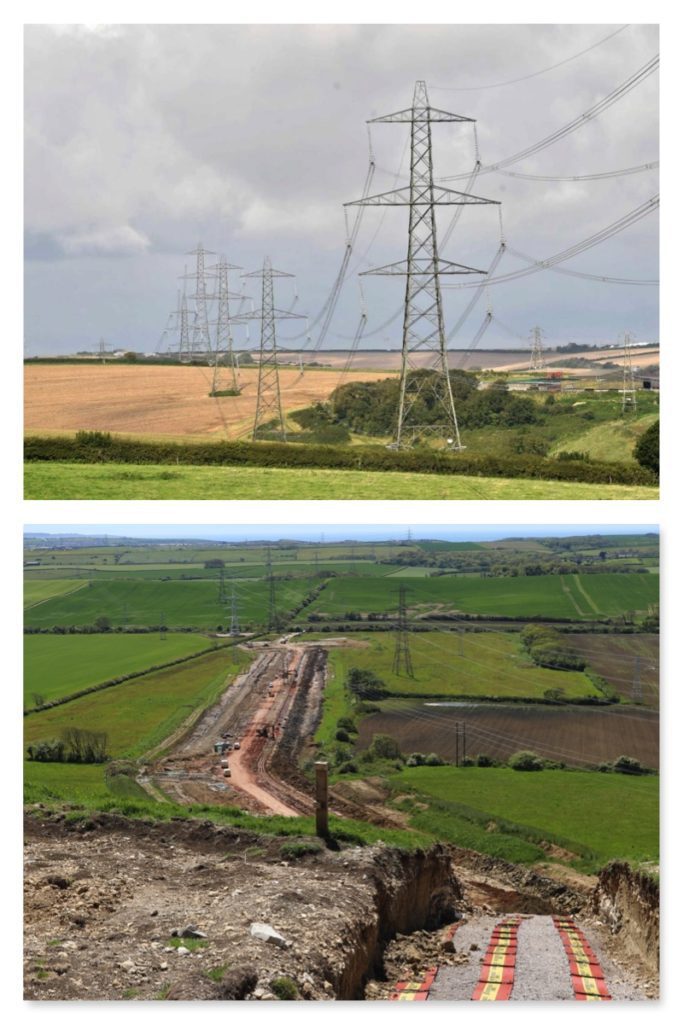
- Does the £118 million the project was initially quoted as costing represent a truly positive environmental investment?
- Is the long term environmental impact of the pylons greater or lesser than the impact of putting the cables underground?
- Would the money have been better spent on wind turbines and solar farms across the AONB instead?
- Would the money have been better spent on installing solar panels on farm and industrial building roofs across the AONB instead?
- Will the aesthetic visual gain be of sufficient significance to justify the £118 million initially quoted being spent to achieve it?
If that project was to be proposed today would it gain planning approval by Dorset Council?
It is estimated that 14% of UK emissions come from domestic energy use (Climate Change Committee, 2019), banning the installation of gas boilers in all new build homes from 2025 and completely from 2035 is a positive move towards helping the country hit its net zero by 2050 target. Given the global gas shortage, which has already caused a number of energy firms to go bust, I am sure you will agree that a move away from gas can’t come soon enough. But it will not be without its challenges.
Sadly missing from the governments British Energy Strategy is anything about reducing energy wastage through better insulation of existing or new build homes, and any significant support for heat pumps. Here in Bridport we have an excellent example of what can be achieved in new build housing at the Cohousing site. Sadly the developers delivering the Foundry Lee houses are still able to get away with building to lower energy efficiency standards, including installing gas boilers, thanks to the lack of joined up thinking and courage to do the right thing by sucessive governments.
It has been calculated that 6 large wind turbines would generate sufficient power for the whole of Bridport. But the wind does not always blow I hear you shouting.
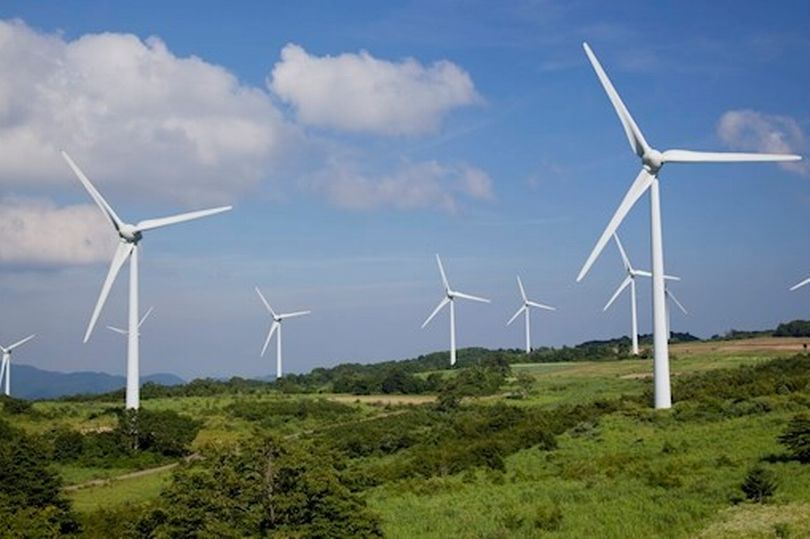
The immediate challenge is how to supply a reliable base-load energy provision whilst accelerating the production of cheap renewables. Battery packs can only go so far in providing that stable base. The government’s British Energy Strategy seems intent on relying on a resurgence of nuclear energy when most countries see the solution in “green hydrogen” from electrolyses fuelled by offshore wind and then used in conventional turbines. Nuclear is by far the most expensive and riskiest option when it comes to technology, cost and safety but the government seems to want to saddle us with centralised high-cost energy for many decades to come.
More than this, there is the longer term issue of whether energy should be centrally controlled (like the current British system) or devolved to municipal level, with community-led local generation schemes (more like the system in Germany). In practice, we will need both of these options, but many experts believe locally based, flexible systems that involve EV car batteries, smart devices and local energy generation is the way to go. Sadly, there is scant discussion of these key issues in this government’s document, which is very disappointing and alarmingly short on inspiration and a real vision.
Energy Local Bridport went live in September 2021. The Club started with a ‘mini Club’ of 14 households, who became the first Energy Local Club in England to start operating. The generator for the Bridport Club is the 50kW wind turbine at Salway Ash, owned by Peter Bailey. Club members pay a ‘match’ price for the wind energy when it is available. The ‘match’ price is cheaper than a normal electricity tariff but more than the generator would otherwise get, so everyone benefits. Initially, the Club will have 50-60 member households. This number was arrived at after detailed modelling, and aims to strike a fair balance of financial benefits to participating households and healthy returns to the wind turbine.
The modelling suggests that each household will match approximately 10% of their electricity consumption with the wind generation, with an anticipated saving of 10-15% on their electricity bills over a year. Once the Club is operational, ongoing monitoring will assess actual benefits to members compare with those predicted.
The Bridport Club covers the geographical area supplied by the Bridport local substation. This incorporates the whole of Bridport town and the surrounding area from Chideock to Shipton Gorge, West Bay to Pymore and parts of Salway Ash.
In order for the Bridport Club to expand and serve more households it needs to develop more generating capacity in the form of wind and solar. Which brings me back to the question I posed earlier in relation to whether it is possible or desirable to achieve this in our AONB and conservation areas?
The Dorset AONB is essentially a working rural landscape containing pockets of land designated as nature reserves. The farming practices of the past 60 years have had a dramatic impact on biodiversity and wildlife. Our AONB may be attractive to look at but it is in many ways an ecological disaster area devoid of the rich array of habitats, wild flowers and wildlife it used to contain. The British Ecological Society has just published a report which suggests that less than 20% of the 28% of our country’s land that is made up of National parks and AONBs actually provides a haven for wildlife, and as such it should not be classed by the government as protected land.
Alongside an acceptance that some of the land in the AONB should be used to generate low carbon energy through the use of wind turbines and solar farms, there is a need for the farming community to change the way in which it operates in order to deliver our food in a much more environmentally friendly and sustainable manner.
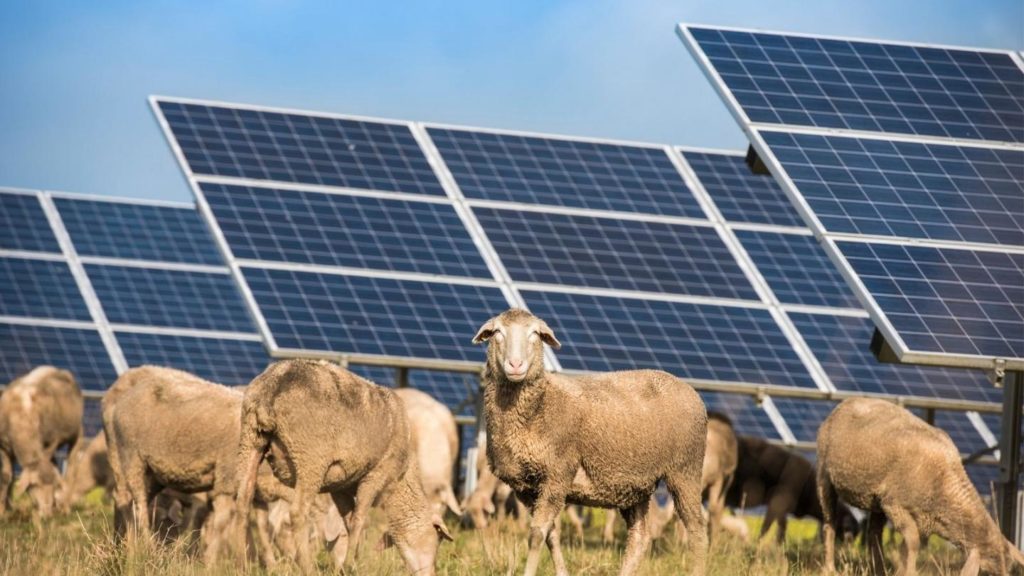
I have seen first hand excellent examples of changes in farming practice already taking place at the Symondsbury and Mapperton estates, and at the Hollis Mead and Denhay farms. All of these farms have been making radical changes to they way in which they manage their land and the positive environmental impacts are already there to be seen in the form of increases in the numbers of birds and small mammals, both of which are excellent indicators of an increasingly healthy landscape.
Just as these forward thinking farmers are changing their working practices to enrich the land they farm, perhaps we also need to be more forward thinking in our attittude towards the landscape we live, work and play in. We all require electricity in our day to day lives and as we move away from carbon based energy we need a renewable energy infrastructure in our midst. Whilst we cannot accept badly designed projects that are detrimental to our communities and the landscape, and equally we cannot simply challenge or object to them all, or the result will be an absence of locally generated renewable energy.
So how to proceed? As always there is a balance to be struck and Dorset, the AONB, Bridport, conservation areas and all of us must be prepared to play our part. But what part will that be?
Sale For Ukraine
This coming May Day Bank Holiday weekend from 10.00am – 4.00pm the Bridport to Ukraine group who have been doing an amazing job over the past few weeks in gathering, sorting and delivering much needed aid to the people of Ukraine are holding a massive sale.

On sale will be all those items which were generously donated but were not really appropriate to send over to Ukraine.
The money raised will be going directly to a link in Ukraine that is working with a number of NGO’s in the Liviv area. They have played a vital role in providing information about both the type of aid needed and ensuring it is distributed promptly to where it is needed most.
When I spoke to Claire Nutall from Bridport to Ukraine she told me that, “This way we know every penny raised is spent on the right aid, and it gets into the right hands immediately on arrival in Ukrine.”

Why not treat yourself to a Sunday breakfast and help to raise even more money for the cause before checking out the sale.
To find out more go to: Bridport to Ukraine
Mayfest in Bridport’s Community Orchard
Mayfest is returning to Bridport Community Orchard – the biggest community event in the orchard since the start of the pandemic.
Alongside traditional celebrations with the May Queen and Jack-in-the-Green, there will be refreshments, games, a range of music, dancing and other entertainment.
The event will begin with the town crier gathering people in Bucky Doo Square to proceed to the orchard, arriving at 12noon.

Alison Todd of Bridport Community Orchard said: “Throughout the afternoon we have a busy programme for you to experience the traditions of early May and enjoy the orchard in blossom. Bring a picnic, we have hot and cold drinks and cakes available by donation and Dorset Nectar cider for sale – please bring your ‘keep cups’ if you can as we are wanting to minimise the use of plastic disposables.
“You can join in the maypole dancing, pet a sheep, make a garland, make a seed bomb, go on a treasure hunt, be entertained by the Mummers, the Wyld Morris dancers and see the magic of the Big Foolini.
“We will have storytelling and live music throughout the afternoon as well. Everyone is welcome.”
Alison Todd of Bridport Community Orchard said: “Throughout the afternoon we have a busy programme for you to experience the traditions of early May and enjoy the orchard in blossom. Bring a picnic, we have hot and cold drinks and cakes available by donation and Dorset Nectar cider for sale – please bring your ‘keep cups’ if you can as we are wanting to minimise the use of plastic disposables.
“You can join in the maypole dancing, pet a sheep, make a garland, make a seed bomb, go on a treasure hunt, be entertained by the Mummers, the Wyld Morris dancers and see the magic of the Big Foolini.
“We will have storytelling and live music throughout the afternoon as well. Everyone is welcome.”
Mayfest will take place in Bridport Community Orchard on Monday, May 2 from 12noon to 3pm.
For more information, visit bridportcommunityorchard.org.uk
And Finally – a community-led electric car club
A timely link with the issues raised earlier in this blog and an opportunity for you to share your opinion.
Local residents, businesses and community organisations are being asked for their views on establishing a community-led electric car club for the Bridport Area via a short online survey. Please take a few minutes to complete the survey because your views, whatever they may be, really matter.
The survey is being promoted by Bridport Town council and Co-Cars and would give affordable access to electric cars for everyone whilst also supporting the shift to zero carbon transport.
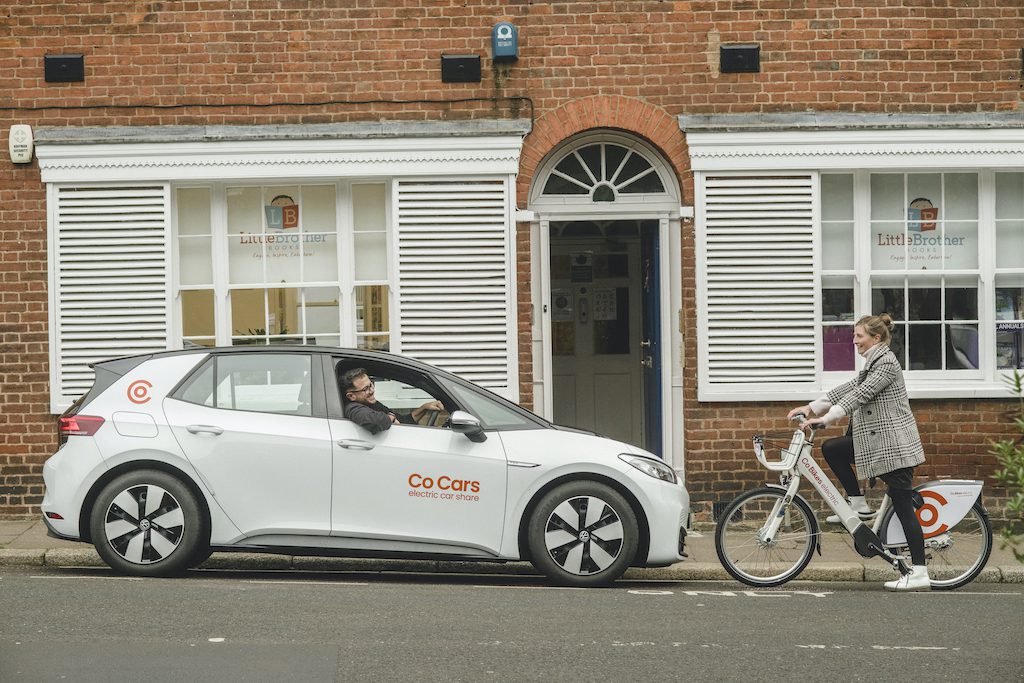
Since the announcement of the Government’s 2030 ban on the sale of new petrol and diesel vehicles, interest in electric cars has surged by 500%1. However, they remain too expensive for many people. In addition, one of the third of households cannot charge a car at home.
An electric car club would address these challenges by locating cars across the district, bookable from as little as half an hour for one all-inclusive price. This would give members access to electric cars without having to own one.
Furthermore, by switching to using an electric car club and getting rid of a little used personal vehicle, members could save money whilst also helping reduce the area’s congestion, parking and pollution problems.
The survey also asks if respondents would be interested in an electric bike share scheme. Because they are electrically assisted, the bikes are a great alternative to the car for many shorter trips including commuting, everyday errands and leisure trips. They also have the potential to make cycling in our hilly landscape easier, something which puts off many people at present.
Cllr Rose Allwork, chair of the Bridport’s Climate Action Sub Committee said that; “As a Town Council committed to responding to the climate emergency we are keen to explore how a car club and e-bike scheme can help address our local transport needs whilst supporting our ambitions for a net zero carbon future”.
The results of the survey will not only help establish the viability of theproject but will also be shared with Dorset Council to assist in their planning androll out of EV charging in Bridport.
The survey is available at https://bit.ly/ElectricBridport and is open until the end of May 2022.



